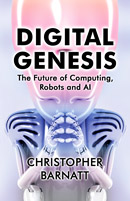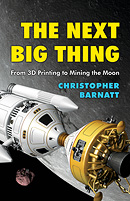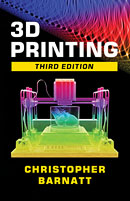 |
|
|
|
On this page:
3D Printing AI Augmented Reality Big Data Bioprinting Cloud Computing Genetic Engineering Helium-3 Power Nanotechnology Quantum Computing Synthetic Biology Future Technologies
Since early humans picked up bones and rocks to pound, cut and kill, technology has been used to change the world and to alter the manner of our existence. In the early 21st century, the technological possibilities that lie ahead are also quite mind bending. The lines between "artificial" and "natural" are blurring by the day, whilst the limits on what can and may be possible lessen with each new technical breakthrough and scientific discovery. Whether or not technology changes the world or we choose to change the world with technology is a matter of sometimes heated but also highly relevant debate. However, what cannot reasonably be denied is that decisions relating to future technology application will in no small part shape the destiny of us all. 3D Printing3D printers create real, solid objects from digital data by building them up in layers that are typically about 0.1mm thin. For several decades 3D printers have been used to create prototypes, but by 2020 it is pretty certain that the majority of 3D printed objects will be final products or parts thereof. For more information, please see the 3D Printing page, my 3D Printing Directory, my 3D Printing videos, or my latest 3D Printing book. Artificial Intelligence (AI)As I discuss in my book Digital Genesis, we will soon enter the Cognitive Computing Age in which any digital technology will be able to possess, or remotely access, some form of cognitive capacity. You can learn more on the ExplainingComputers.com AI page. Augmented RealityAugmented reality (AR) overlays digital data on a real-time view of the world. For example, most commonly a user can hold up a smartphone or tablet and see additonal information overlaid on its video feed. For more information see the augmented reality page. Big DataBig Data generates value from the storage and processing of very large quantities of digital information that cannot be analyzed with traditional computing techniques. For more information see the Big Data page on ExplainingComputers.com. BioprintingBioprinters are 3D printers that output living cells in order to permit the creation of human or other animal tissue and even entire organs. For more information please see the bioprinting page or watch my bioprinting video. Cloud ComputingCloud computing is where computer software, user data and processing power are accessed from the Internet "cloud" rather than a local desktop or organizational data centre. This allows users to access their data and applications from any device, and also to collaborate more easily. For more information see the cloud computing section on ExplainingComputers.com. Genetic EngineeringGenetic engineering alters the traits of living organisms by changing the information encoded in their DNA. This may involve the creation of genetically modified (GM) plants, animals and micro-organisms, as well as the development of genetic medicine. For more information see the genetic engineering page. Helium-3 Power GenerationHelium-3 may be the fuel for a new generation of clean, nuclear fusion power plants. Unfortunately, helium-3 is also exceptionally rare on the Earth. There is, however, thought to be an abundant supply of helium-3 on the surface of the Moon. Mining lunar helium-3 may also become a large part of our "solution" to Peak Oil, broader fossil fuel depletion, and climate change. For more information see the Helium-3 Power page. NanotechnologyNanotechnology is the science of understanding and manipulating materials on a nanometre scale. A nanometer is just one billionth of a metre, or the length of a few atoms placed end-to-end. Already nanotechnology is being used in the production of some microprocessors, batteries, computer displays, paints and cosmetics. But this really is just the begnning of a manufacturing and medical revolution. For more information, please see the nanotechnology page. Quantum ComputingRather than storing and processing information using miniature transistors contained in silicon chips, quantum computers work with data using the quantum-mechanical states of sub-atomic particles. Due to the peculiarities of quantum mechanics, each quantum computing 'qubit' can store a value of both '1' and '0' simultaneously, thereby allowing quantum computers to move beyond the limitations of binary processing. For more information, please see the quantum computing page over on ExplainingComputers.com. Synthetic BiologySynthetic biology applies an engineering mentality to biology. Whereas "traditional" genetic engineers splice a gene or two from one existing species into another, synthetic biologists radically alter existing life for new purposes. They have alos started to create new forms of life from scratch using standardized genetic components termed 'biobricks'. For more information on this newest of revolutionary sciences, please see the synthetic biology page. |
 The Pandora's box of future technological opportunity is unlikely to be held shut. RELATED VIDEOS 3D Printing Bioprinting Helium3 Power Synthetic Biology Top 10 New Future Jobs Biocomputer Unboxing Playing at God? Read more in my latest books:    |
|
|